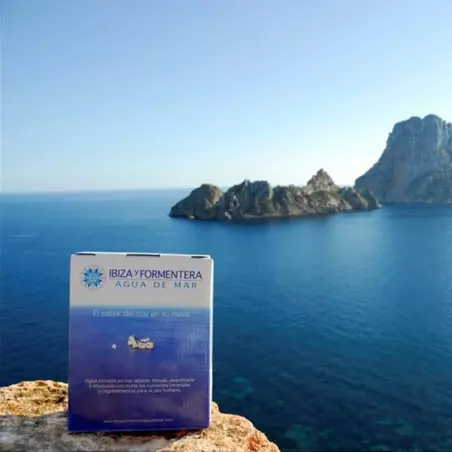The lacto-fermentation is a method of preserving vegetableswhich involves preserving food, multiplying the benefits of the ingredients, and giving them a tangy flavor from the lactic acid that develops during fermentation.
One of the main advantages of fermented foods, besides the development of beneficial bacteria, is the considerable increase in the shelf life of the foods. It is an ancient preservation technique for raw vegetables. Salt is the essential ingredient for lacto-fermentation., because it promotes the growth of beneficial lactic acid bacteria in the intestinal flora while preventing the growth of pathogenic bacteria.
However, it can be difficult to know which salt to use for lactic fermentation because there are many varieties, each with different properties and flavors. In this article, we will examine the types of salt most commonly used for the lacto-fermentation of fresh vegetables and discuss their advantages and disadvantages.
What are the different types of salt that can be used ?
There are several types of salt that can be used for lacto-fermented vegetables, each with its own advantages and disadvantages. Here are some of the most commonly used types of salt for lacto-fermentation:
- Unrefined sea salt: This salt comes from the evaporation of seawater and is often considered a suitable choice for lacto-fermentation because it naturally contains minerals such as magnesium, calcium, and potassium. Unrefined sea salt is also less processed than table salt, which means it may contain fewer additives.
- Himalayan salt: This salt is extracted from the Himalayan salt mines and contains minerals such as iron, zinc, and copper. It is considered among the purest salts, which is why it is often more expensive than other types of salt.
- Table salt: Ordinary table salt can also be used, but it is often recommended to use non-iodized salt. The iodine present in some table salts can inhibit the fermentation process.
- Marine plasma: This is the solution we mainly recommend for nutritional reasons and also for practical reasons. Indeed, it is important to know that salt, whether refined, unrefined, white, gray, pink, etc., has been exposed for a long time to the sun (or industrial drying), ultraviolet rays, and oxygen. These processes, as natural as they may be, result in the alteration and oxidation of various elements, particularly micronutrients.
What size of salt grains should I choose ?
The size of the salt grains used for lacto-fermentation is important because it can affect how the salt is absorbed by the food and how lactic bacteria develop. Generally, if you are using salt and not marine plasma, it is recommended to use fine salt or fine sea salt, as finer salt grains dissolve more quickly and are therefore more easily absorbed by the food. This also allows lactic bacteria to develop more easily, as they have easier access to nutrients.
Larger salts, such as coarse salt, can also be used for lacto-fermentation, but it is important to crush or grind them before use. This will allow the larger grains to dissolve more quickly and be more evenly distributed in the food.
Which salt should not be used for lacto-fermentation ?
Refined salt (white) is pure sodium chloride. Like refined sugar, it has been industrially stripped of all its minerals and should be avoided because it can cause high blood pressure and water retention. If you are already prone to hypertension, do not hesitate to discuss this issue with a healthcare professional. Therefore, it should be avoided when preparing brine for lacto-fermentation. Refined salt is acidifying for the body and can also promote calcium deficiencies because the body will mobilize calcium resources from the bones or teeth to buffer this acidity.
What water should be used for lacto-fermentation ?
It seems obvious, but it is important to remember that the phenomenon of lacto-fermentation occurs thanks to bacteria of the genus Lactobacillus naturally present in vegetables. By using chlorinated water, the chlorine will, of course, strongly interact with these friendly bacteria, potentially even destroying them. Therefore, it is not recommended to start your lacto-fermentations with tap water. Filtered water or spring water are preferable.
If you only have tap water available, you can reduce the amount of chlorine by letting it sit out in the open air (a good portion of the chlorine will evaporate) or by boiling it and then letting it cool. Ideally, if you have the opportunity, you can inoculate the water used with a bit of raw sauerkraut juice or with some brine from a previous lacto-fermentation. This inoculation will make an excellent "starter."
Which vegetables for lacto-fermentation ?
A great many vegetables can be lacto-fermented besides the traditional white cabbage used in raw sauerkraut. We naturally recommend starting with whole and organic vegetables, which will promote the development of live bacteria. In winter, we naturally turn to root vegetables: carrots, beets, celeriac, sweet potatoes (rarely mentioned but works very well in lacto-fermentation), green beans, turnips, radishes...
Other cabbages can also be used: broccoli, cauliflower, green cabbage, as well as other vegetables. In season: cucumber, fennel, celery stalk, beans, onions, etc.
The benefits of seawater (marine plasma) in lacto-fermentation
It is of course possible to use unrefined salt, such as grey salt from Guérande, Himalayan salt, etc., which have the advantage of containing more minerals and trace elements than refined salt. Nevertheless, The most interesting solution in terms of nutrition and taste is to carry out lacto-fermentations in undiluted microfiltered marine plasma. (equivalent to 35 grams of salt per liter) because marine plasma contains 93 elements from Mendeleev's periodic table in a bioavailable form, and these elements are directly assimilable.
Find our favorite recipe here.
Marine plasma is a true matrix of life due to its great richness in nutrients. The "friendly" bacteriological activity will be much richer than with table salt, given this variety of minerals and trace elements. Mineral salt comes from an evaporation process during which oxygen, ultraviolet rays, and drying have altered a large number of its micronutrients. By using marine plasma, seawater, you will have THE most relevant nutritional profile for your lacto-fermentations., thanks to the activity of marine plankton which made the trace elements and minerals present assimilable. Find our video on this topic:








